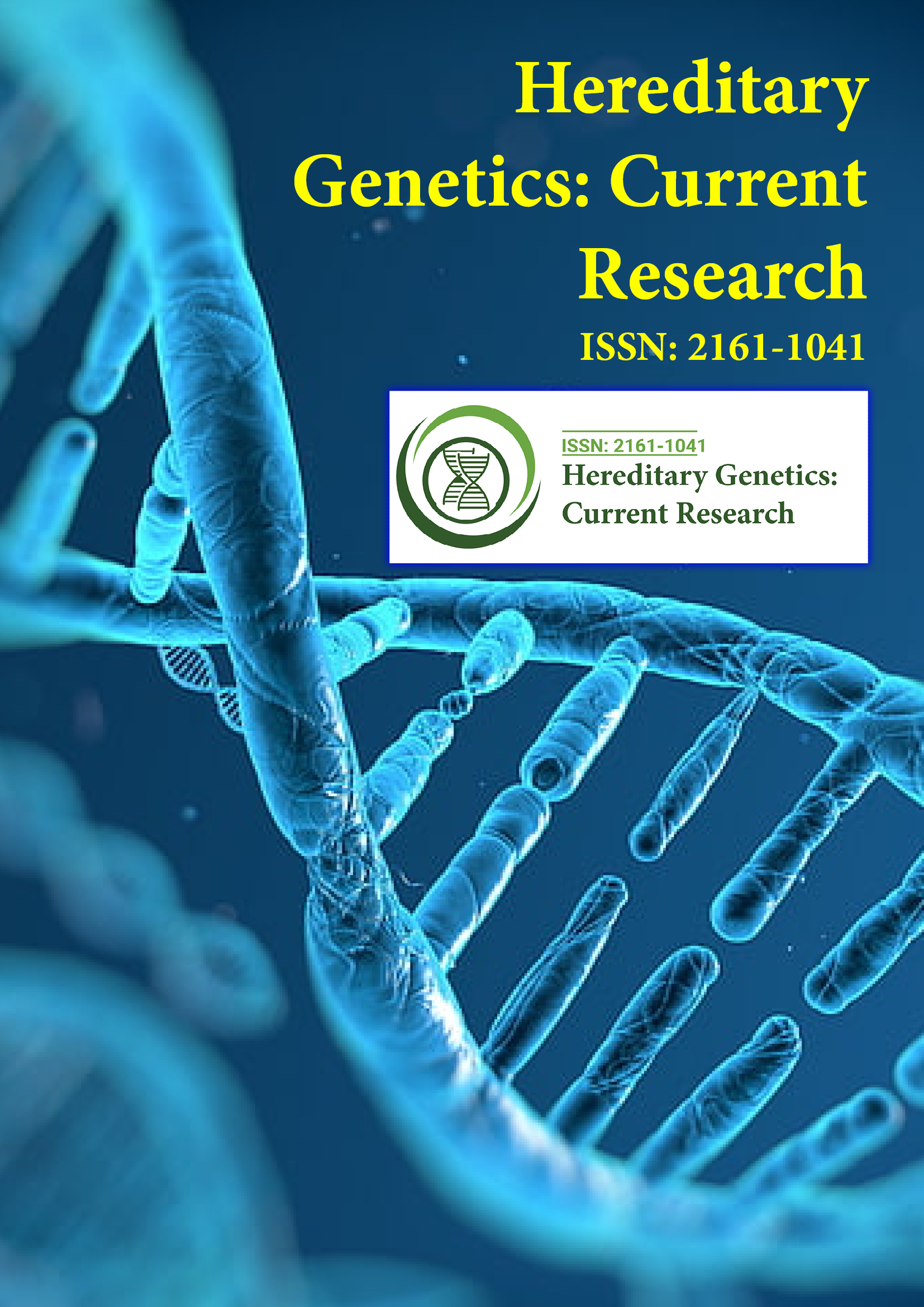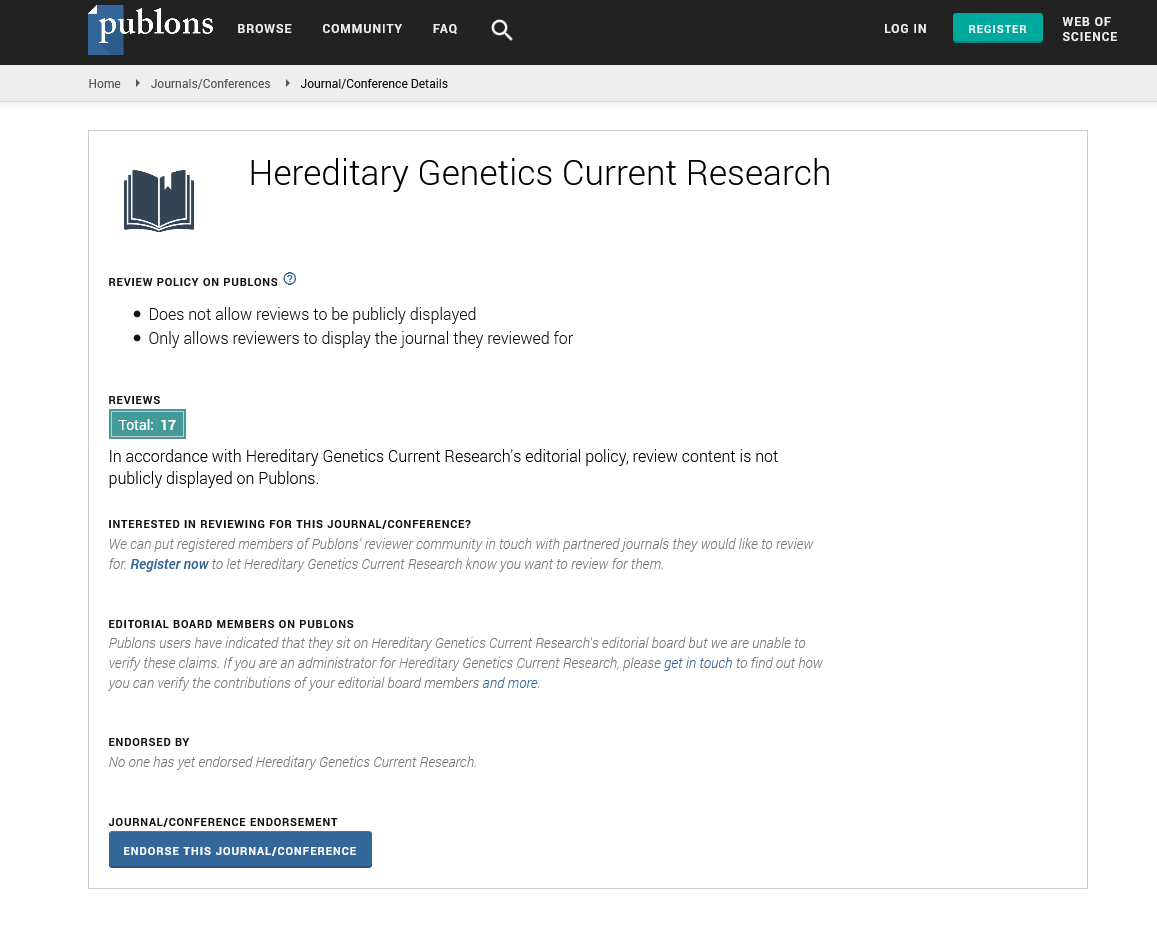Indexed In
- Open J Gate
- Genamics JournalSeek
- CiteFactor
- RefSeek
- Hamdard University
- EBSCO A-Z
- NSD - Norwegian Centre for Research Data
- OCLC- WorldCat
- Publons
- Geneva Foundation for Medical Education and Research
- Euro Pub
- Google Scholar
Useful Links
Share This Page
Journal Flyer

Open Access Journals
- Agri and Aquaculture
- Biochemistry
- Bioinformatics & Systems Biology
- Business & Management
- Chemistry
- Clinical Sciences
- Engineering
- Food & Nutrition
- General Science
- Genetics & Molecular Biology
- Immunology & Microbiology
- Medical Sciences
- Neuroscience & Psychology
- Nursing & Health Care
- Pharmaceutical Sciences
ChIPmentation: An innovative technology for fast and high quality ChIP-seq
4th International Congress on Epigenetics & Chromatin
September 03-05, 2018 | London, UK
Anne Clemence Veillard
Diagenode, Belgium
Keynote: Hereditary Genet Curr Res
Abstract:
Epigenetics is crucial for the regulation of gene expression and has broad relevance in biological processes like development, disease and response to the environment. Epigenomics, the study of the epigenetic state of the genome, is therefore a fast growing field. Diagenode, as a long time expert and leader in developing optimized tools to study epigenetic marks such as histone post translational modifications and DNA methylation, continuously innovates further to study the epigenetics. Diagenode???s latest innovation, ChIPmentation, integrates both chromatin immunoprecipitation (ChIP) and library preparation within the same protocol to ensure successful next-generation sequencing experiments. Chromatin immuno precipitation coupled with high throughput sequencing (ChIP-seq) has become the gold standard for whole genome mapping of protein DNA interactions. ChIPmentation, developed by Diagenode in collaboration with the CeMM (Vienna-Austria) is based on tagmentation technology and is a robust ChIP-seq solution that permits the integration of sequencing library preparation into the ChIP experiment. This approach significantly reduces the number of steps in the process. In addition, ChIPmentation has been integrated into the work flow of Diagenode???s IP-Star automated platform for greater ease of use, simplicity and reproducibility. ChIPmentation is a robust technology that will enable the generation of data quickly and reliably for epigenomics research. Recent Publications 1. Laczik M (2016) Iterative fragmentation improves the detection of ChIP-seq peaks for inactive histone marks. Bioinformatics and Biology Insights 10:209-224. 2. Veillard A C (2016) DiagenodeŽ premium RRBS technology: cost-effective DNA methylation mapping with superior coverage. Nature Methods 13:184. 3. Schmidl C (2015) ChIPmentation: fast, robust, low-input ChIP-seq for histones and transcription factors. Nat. Methods 12:963???965. 4. Veillard A C (2014) Stable methylation at promoters distinguishes epiblast stem cells from embryonic stem cells and the in vivo epiblasts. Stem cells and Development 23(17):2014???2029.
Biography :

